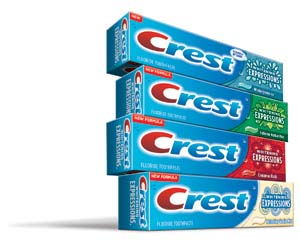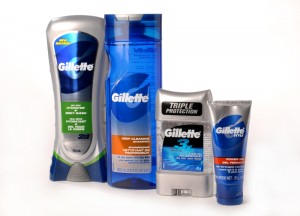 After writing about the 20 year performance of Colgate-Palmolive stock, my Aunt Donna asked me about Dawn dish soap, which is owned by Procter & Gamble. I broke out the historical dividend charts and went to work to create a comparison of how an investor would have fared had they parked money in P&G twenty years ago and walked away, forgetting about it until now. Here is what I found …
After writing about the 20 year performance of Colgate-Palmolive stock, my Aunt Donna asked me about Dawn dish soap, which is owned by Procter & Gamble. I broke out the historical dividend charts and went to work to create a comparison of how an investor would have fared had they parked money in P&G twenty years ago and walked away, forgetting about it until now. Here is what I found …
Imagine it is the first trading day of 1991 and you have a single tax-free IRA with $100,000 in cash in it. You decide to invest in shares of Procter & Gamble. You buy your block of common stock, forgetting about the transaction for twenty years. A share of Procter & Gamble traded for $6.88 split-adjusted at that time so you would have been able to get the equivalent of 14,535 shares of stock.
In the twenty years that followed, despite multiple recessions, including the worst meltdown since the Great Depression, the dot-com bubble and the housing bubble, multiple international wars, ballooning government deficits, exploding national debt, and a maelstrom of regulatory changes in the financial industry, you would have prospered.
[mainbodyad]It turns out that no matter how bad things get, consumers like purchasing Head & Shoulders, Olay, and Pantene shampoos, Gillette razors, Crest and Oral-B toothpaste, Iams dog food, Pringles potato chips, Dawn dish soap, Downy paper towels, Gain and Tide laundry detergent, Duracell batteries, Covergirl makeup, Old Spice, Herbal Essences, Pert, Tampax, Safeguard, Bounce dryer sheets, NyQuil, Cascade, Mr. Clean, Fabreze, Swiffer, Charmin toilet paper, and Pampers diapers. Boring, run of the mill products that were forgotten when people paid 500x earnings for Internet router manufacturers or flipped houses.
Specifically, your shares would have had a market value of $64.58 on the last trading day of 2010. That would give your 14,535 shares a total market value of $938,670. In addition, you would have collected $16.75 in cash dividends per share throughout the two decades you held the stock, including a one-time special dividend issued by the company in 2002 for the Jif/Crisco spinoff, meaning you’d have $243,461 in cash.
Your $100,000 in Procter & Gamble Stock Would Have Grown to $1,182,131
Your account, which began with $100,000, would be holding $1,182,131 in stock and cash. That is a return of 13.14% without dividends reinvested over twenty years.

Shares of Procter & Gamble have generated tremendous wealth for owners over the past two decades from manufacturing dozens of world-famous household brands.
“What about inflation?” you ask. A $1.00 bill in 1991 was worth only $0.62 in 2010 so the real, inflation-adjusted value of the account in 1991 dollars would be $732,921. That is still a real return of 10.47% compounded without dividends reinvested over 20 years.
That is one hell of a deal for someone who didn’t have to do anything except read the annual report each year to make sure that profits continued to rise, debt remained manageable, executives weren’t overpaying themselves, and the products the firm sold were still relevant to consumers. It’s even more impressive when you notice that we didn’t assume you reinvested your $243,461 in dividend income. You could have spent it, given it away, or even used it to invest in bonds to generate some interest income. Had you plowed it back into Procter & Gamble stock, you would have had even more wealth, and even higher dividend income, as you increased your ownership of the business.
Why don’t most people experience these types of returns? They trade. They try to “rent stocks instead of owning businesses”. Instead of focusing on finding a good business with a competitive moat, that generates high returns on non-leveraged equity capital, making sure they pay a fair (or cheaper) price than it is worth on a conservatively estimated basis, and holding on for a long time, they buy and sell stocks, generating commissions for their broker, spreads for market makers, taxes for the government, and needless volatility for other shareholders.
 The older, wiser, richer, and more experienced I grow, I become more convinced that the average 18 year old would do well to take $10,000 per year and put it in a few different asset classes including shares of a solid, boring, reasonably priced enterprise, reinvest the dividends, holding the position through a tax-advantaged account. If repeated year after year until retirement at age 65 with two or three dozen firms making it into the portfolio, it is not difficult to imagine a seven or eight figure portfolio throwing off hundreds of thousands of dollars a year in cash. You could be a D- student, a middle school drop-out, or a complete failure at nearly everything and it would still work for you if you focus on risk management by not overpaying for your shares. For those who can’t value individual companies, index funds provide much of the same benefit without the bottom-up approach.
The older, wiser, richer, and more experienced I grow, I become more convinced that the average 18 year old would do well to take $10,000 per year and put it in a few different asset classes including shares of a solid, boring, reasonably priced enterprise, reinvest the dividends, holding the position through a tax-advantaged account. If repeated year after year until retirement at age 65 with two or three dozen firms making it into the portfolio, it is not difficult to imagine a seven or eight figure portfolio throwing off hundreds of thousands of dollars a year in cash. You could be a D- student, a middle school drop-out, or a complete failure at nearly everything and it would still work for you if you focus on risk management by not overpaying for your shares. For those who can’t value individual companies, index funds provide much of the same benefit without the bottom-up approach.
Oh, and one more thing: Just like almost every stock in the world, you would have experienced at least one or two 40% to 50% drops in the market value of your Procter & Gamble stock during your holding period. That is the price of generating wealth through stock ownership. If you can’t handle that, park your money in the bank and be content with the meager returns that are available. As Benjamin Graham said:
The investor with a portfolio of sound stocks should expect their prices to fluctuate and should neither be concerned by sizable declines nor become excited by sizable advances. He should always remember that market quotations are there for his convenience, either to be taken advantage of or to be ignored. He should never buy a stock because it has gone up or sell one because it has gone down.” – The 1949 Edition of The Intelligent Investor
[mainbodyad]


